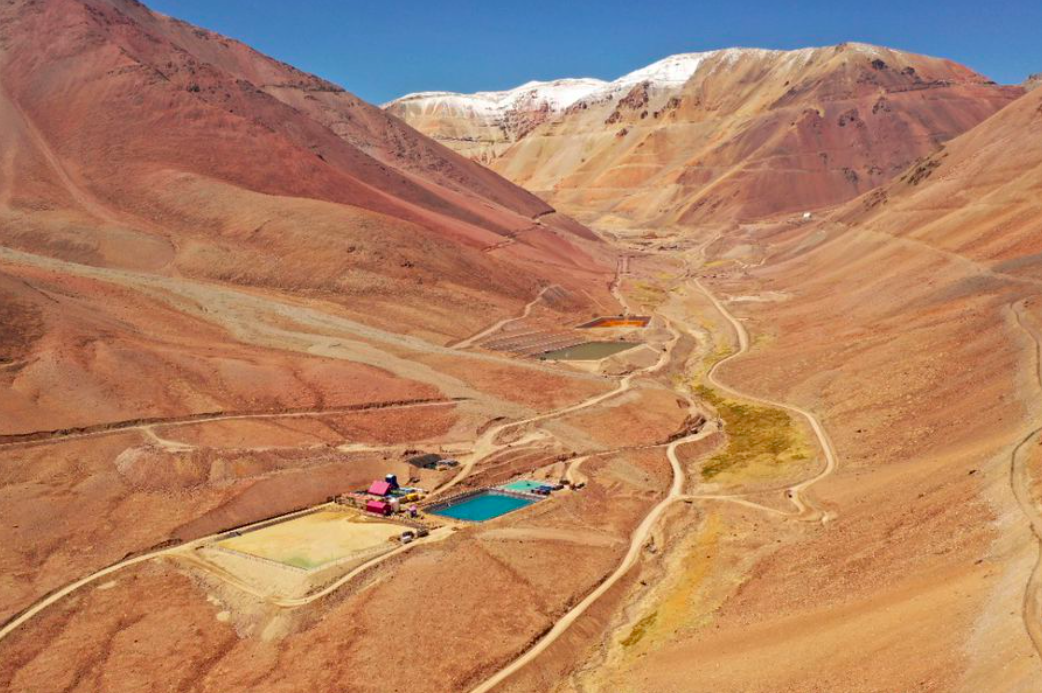RIO DE JANEIRO, BRAZIL – The closure of Pascua Lama, the failed bi-national mining project between Chile and Argentina pushed by Canada’s Barrick Gold Corporation, has taken longer than planned, and discussions with the government continue.
On September 17, 2020, the Antofagasta Environmental Court ordered the suspension of the initiative’s activities due to water pollution and glacial damage in the Atacama region. The deposit, where gold, copper, and other minerals were to be mined, envisioned a US$2.5 billion investment and has recently suffered a new setback.
Read also: Check out our coverage on Chile
The regional director of the Atacama Environmental Authority, Verónica Ossandón, decided to prematurely terminate the assessment of the environmental impact statement (EIS) of the project to close the water management system of the Pascua Lama project of Compañía Minera Nevada SpA, a subsidiary of Barrick Gold. The reason? According to the authority, the mining company’s presentation lacks “essential information” because it cannot be assessed whether the project causes or presents impacts, characteristics, or circumstances as defined in Article 11 of Law No. 19,300.

In its decision of January 7, 2022, the Environmental Authority concluded that the EIS for the project entitled “Collection of information for the closure of the water management system of the Pascua Lama Project, will infiltrate water between the sector immediately downstream of the leakage cutting system and the existing well line 4, and there is no information related to water resources at points NE-4, NE-7, and NE-8, which are downstream of the area of influence defined in this EIS, it is determined that the project lacks significant information, which prevents a determination of whether there is a significant environmental impact to this component. It cannot be corrected through ICSARA, so the environmental assessment cannot adequately proceed.”
The mining company must dismantle a water treatment plant in the Estrecho River and return the water to its natural course in its closure plan. The valley is the confluence of water flows from snowmelt and rivers from the Andes, which have high mineralization levels.
Barrick has intervened in the river’s flow to purify the water and requires permanent treatment. In fact, 30 to 40 people are currently working on-site to maintain the plant. At the same time, they clear access roads during the winter and continue to dismantle the sheds as part of the plant shutdown.
In response to the setback, Compañía Minera Nevada SpA filed a request to review the environmental agency’s decision. In its presentation, it argued that “the original project, approved by RCA 24/2006, provided for at least 100 years of treatment of contact waters from the Nevada Norte landfill, which was fully developed at the end of the useful life of the original project, assuming that the discharged waters would gradually (after 100 years) reach a quality compatible with the baseline of the Del Estrecho River so that water treatment could be discontinued.”
However, last Friday, the Supreme Authority of the Atacama Region decided to reject the request for reconsideration and the hierarchical request for subsidy.
“The current decommissioning plan provides at least 100 years of operation for the Acid Rock Water Treatment Plant (DAR Plant). However, the current and final condition of the project is different, as the Nevada Norte Landfill has not reached more than 1% of its development in its current condition, and there are no discharges at the base of the landfill,” it added.
That is another problem for the company that wants to capture the epilogue of the Canadian company in our country after the Supreme Court accused the company on February 5 of failing to comply with its closure plan. The Third Chamber of the Supreme Court ruling states that the mining company “failed to comply with the closure permit imposed on it because it carried out work that was inconsistent with the closure plan approved by the authority.”
In its response to the ruling, Barrick Gold stated that “the drilling carried out – which was questioned by the Huasco community – was not related to the closure of the Pascua Lama project and was part of a geological study to evaluate and fully understand the potential of the known deposits.”
LOBBY MEETINGS
For the company, the case is a complex process. In this sense, people familiar with the project stated that “the closure of a project that has not been completed has never been done before.” Therefore, the company wants more information from the authorities without losing sight that the initiative could trigger a strong economic development for the Atacama region.
Currently, Compañía Minera Nevada SpA is conducting three exploration campaigns to evaluate whether the project can be developed independently in Argentina. The decision on the final allocation is expected to be made in 2024.
At the same time, the company is trying to solve its problems in Chile with its closure plan. To this end, the mining company executives have been meeting with authorities via video conference under the Lobby Act.
The first meeting took place on January 12, 2022. The meeting was attended by Marcelo Álvarez, Executive Director of Government Affairs South America of Barrick, and Juan Carlos Jobet, Minister of Mines. Azerta’s partner, Miguel Flores, former Undersecretary of Regional Development in the first administration of President Sebastián Piñera (2010-2014), also attended the meeting on behalf of the company.
At the meeting, the Minister of Mines was accompanied by the head of the Sustainable Development Department, Sebastián Herrera.
Two days later, the head of Barrick Chile’s legal department, Gonzalo Montes Astaburuaga, met with the Minister of Economy. Unlike the previous hearing, which lasted only 30 minutes, this conversation was longer and lasted an hour. The talk, in which Flores and Álvarez were also present, was about the early closure of the Pascua Lama project.
With information from La Tercera

